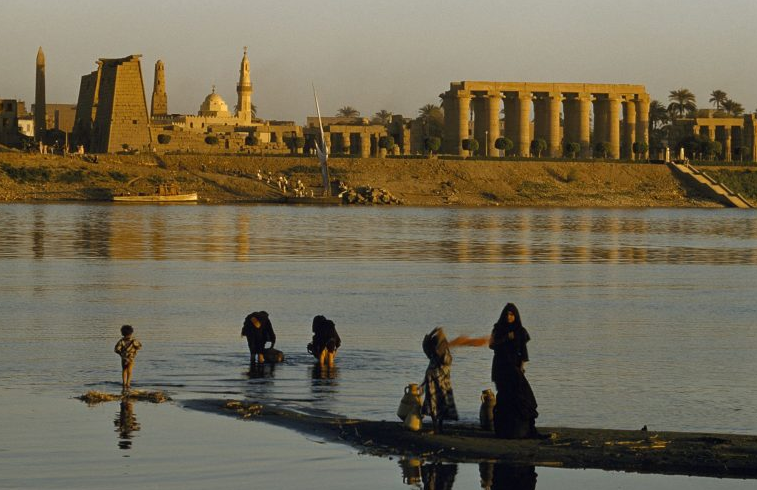Newly Unearthed Nile River Branch Reveals Ingenious Engineering of Ancient Egyptians (GS Paper 1, History)

Context
- In a groundbreaking discovery, researchers have unearthed evidence of a previously unknown branch of the Nile River, shedding light on the remarkable engineering prowess of the ancient Egyptians.
- The newfound river segment, spanning approximately 64 kilometers, meandered near the iconic Giza pyramid complex and over 30 other pyramid sites, unveiling a crucial piece of the puzzle behind the construction of these ancient wonders.
Ahramat
- Led by Eman Ghoneim from the University of North Carolina Wilmington, an international team utilized state-of-the-art radar satellite imaging technology to identify and map the buried watercourse.
- Named "Ahramat," meaning "pyramids" in Arabic, this hidden river promises to revolutionize our understanding of how the ancient Egyptians undertook their monumental construction projects.
Unraveling the Mysteries of Ancient Engineering
- The proximity of the river branch to the pyramid sites suggests that it played a pivotal role in the transportation of colossal stone blocks used in the construction of these architectural marvels.
- While the notion of utilizing waterways for logistical purposes has long been speculated, the concrete evidence provided by this discovery reaffirms the ingenuity and meticulous planning of the ancient Egyptians.
Implications for Historical Understanding
- This finding not only underscores the sophistication of ancient Egyptian engineering but also prompts a reassessment of established narratives surrounding the construction of the pyramids.
- By elucidating the presence of a nearby waterway, researchers can now envisage a more comprehensive picture of the scale and intricacy involved in these monumental undertakings.
A Glimpse into the Great Pyramid of Giza
- Constructed during the reign of Pharaoh Khufu between 2580 and 2560 B.C., the Great Pyramid of Giza stands as a testament to ancient architectural prowess.
- Rising to a height of 146.6 meters (481 feet), it held the title of the world's tallest man-made structure for over 3,800 years.
- Comprising approximately 2.3 million limestone and granite blocks, each weighing around 2.5 tons, the pyramid exemplifies unparalleled craftsmanship and organizational skill. Its impeccable alignment with true north and stable internal temperature further accentuate the mastery of ancient Egyptian builders.
Reimagining Ancient History
- As we continue to unravel the mysteries of the past, discoveries like the unearthed Nile River branch serve as poignant reminders of the enduring legacy of ancient civilizations.
- Through a combination of innovative technology and scholarly inquiry, we inch closer to comprehending the awe-inspiring achievements of our ancestors and the profound impact they have left on the tapestry of human history.


